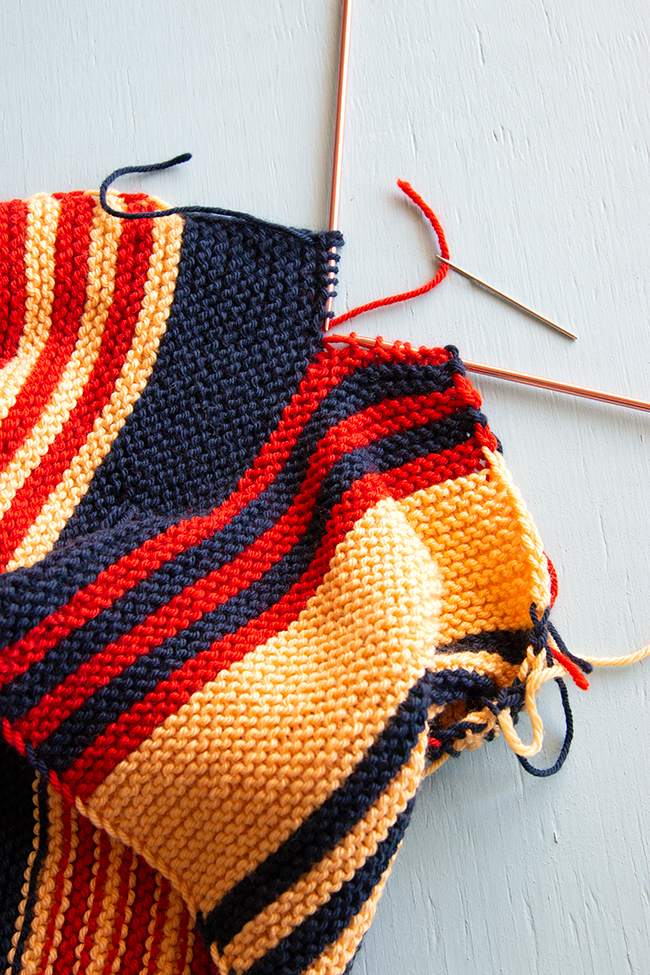The kitchener stitch is used in knitting to graft live stitches together. Not to be confused with other knitting stitches like seed stitch or moss stitch for example, kitchener is stitch done by hand using a blunt, large-eyed sewing needle called a tapestry needle. With kitchener stitch, you’re hand sewing a horizontal row of knit stitches to invisibly join two pieces of knitting with live loops. Kitchener can be done with stockinette stitch as well, but today, we’re focusing on how to do kitchener stitch for garter stitch knitting projects.
(Here are is an older tutorial of mine on kitchener stockinette stitch if you’re looking for that.)
A look at the wrong side of my sample project, mid-garter kitchener stitch.
And here’s a look at the right side of my sample project, mid-garter kitchener stitch. As you can see, the row of kitchener stitches invisibly joins the two ends of this garter stitch cowl project.
Why do garter kitchener stitch?
Any time you want to join two sets of live stitches without leaving a seam, kitchener stitch is the technique to use. You can use it to, as shown in this blog post and video, join the ends of a cowl into a scarf, or use it to close up the tips of cuff-down socks or mittens, for example.
How to work kitchener stitch with garter stitch knitting
Video tutorial:
Useful resources:
- How to Kitchener Stitch – Sarah Makes
- Grafting (formerly known as the kitchener stitch) – Tin Can Knits










 & shop new patterns
& shop new patterns 





Leave a Reply